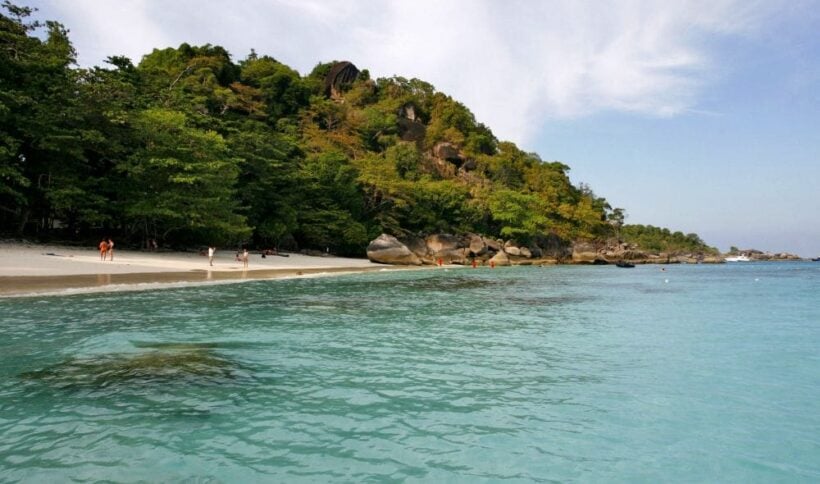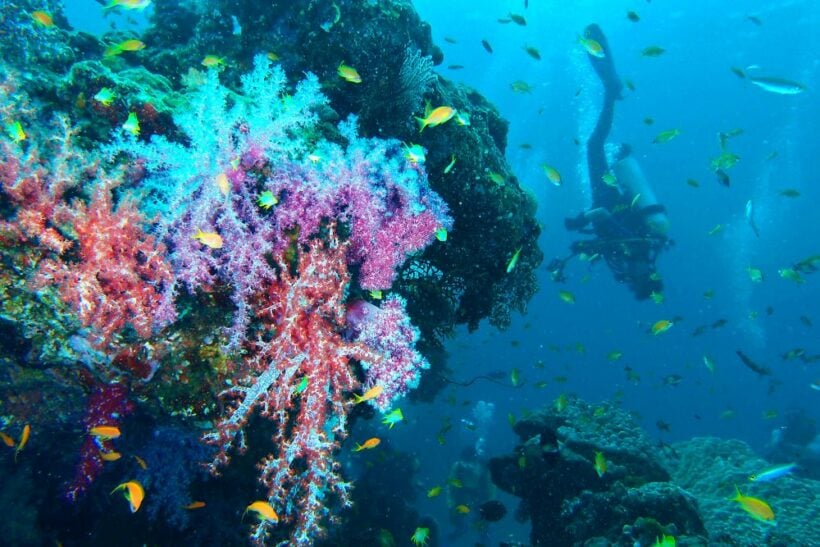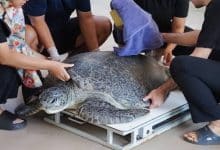Similans re-open with tight new restrictions

by Pratch Rujivanarom
The number of visitors to the Similan Islands will be capped at 3,850 people per day as part of new tourism management reforms to preserve the pristine natural beauty of the islands and promote sustainable eco-tourism.
When Mu Koh Similan National Park reopens today, tourists will discover some changes on the islands; they will find more tranquil beaches but also tighter enforcement of rules by national park officials to make sure that both tourists and the picturesque natural beauty around them will be safe.
Mu Koh Similan National Park chief Ruamsin Manajongprasert says the new tourism management plan has been revised to deal with two major challenges that the national park had been facing – excessive tourism and ecosystem degradation.
“Since Tachai Island is closed to all visitors due to environmental damage caused by tourism activities, the Similan Islands are the destination where the mass groups of tourists are diverted to,” Ruamsin said.
“Therefore, the National Park, Wildlife and Plant Conservation Department [DNP] decided that it was now time to come out with tougher tourism management rules in order to ensure that tourism activities at Mu Koh Similan National Park will be sustainable and cause less harm to the fragile ecosystems of the islands.”
He said starting from this tourism season, every tourist boat will have to notify the national park and get permission first before entering the islands. No more than 3,325 visitors will be allowed per day for one-day trips and 525 visitors per day will be allowed on scuba-diving tours at Similan Islands.
There will be no overnight stays at the islands.
“I am confident that our national park officers are now ready to perform their duties to look after the tourists’ safety and preserve the islands’ rich ecosystems, which will ensure that our next generations will have a chance to appreciate the natural beauties of our national parks,” Ruamsin said.

Prof Dachanee Emphandhu, a lecturer at Kasetsart University’s Faculty of Forestry and a researcher on tourism management and carrying capacity of Mu Koh Similan National Park, said if the measures were successful, the tourism management reform at Similan Islands would become an inspiration for other marine national parks to emulate.
“This is not the first time that the DNP is trying to limit the number of tourists and enforcing tighter rules to preserve natural resources and the ecosystems of the national parks. But this time it is different, as the officers of the DNP and the Mu Koh Similan National Park are very determined about tourism management reform, because the existence of our unique and priceless marine ecosystems are at stake,” Dachanee said.
However, tourism business operators arn’t happy with the reforms at Similan Islands. They regard the national park’s new tourism management rules as too radical and also too suddenly enforced, hence most of the operators are unable to adapt to such extreme changes and will unavoidably suffer severe damage to their business.
One of the tour operators in Mu Ko Similan National Park, Torphong Wongsathienchai, revealed that due to the significant adverse impacts to tourism business from the new tourism management rules at Similan Islands, he was forced to lay off 120 employees in order to keep his company operational.
“I have no choice but to ask many of my staff members to resign and put their families in financial uncertainty,” Torphong said.
“We totally support sustainable tourism management at Similan Islands, because the picturesque nature of the islands is a goose with golden eggs for us, but we want the change and enforcement to be gradual so that the tour operators can adapt.”

SOURCE: The Nation
Latest Thailand News
Follow The Thaiger on Google News:


























